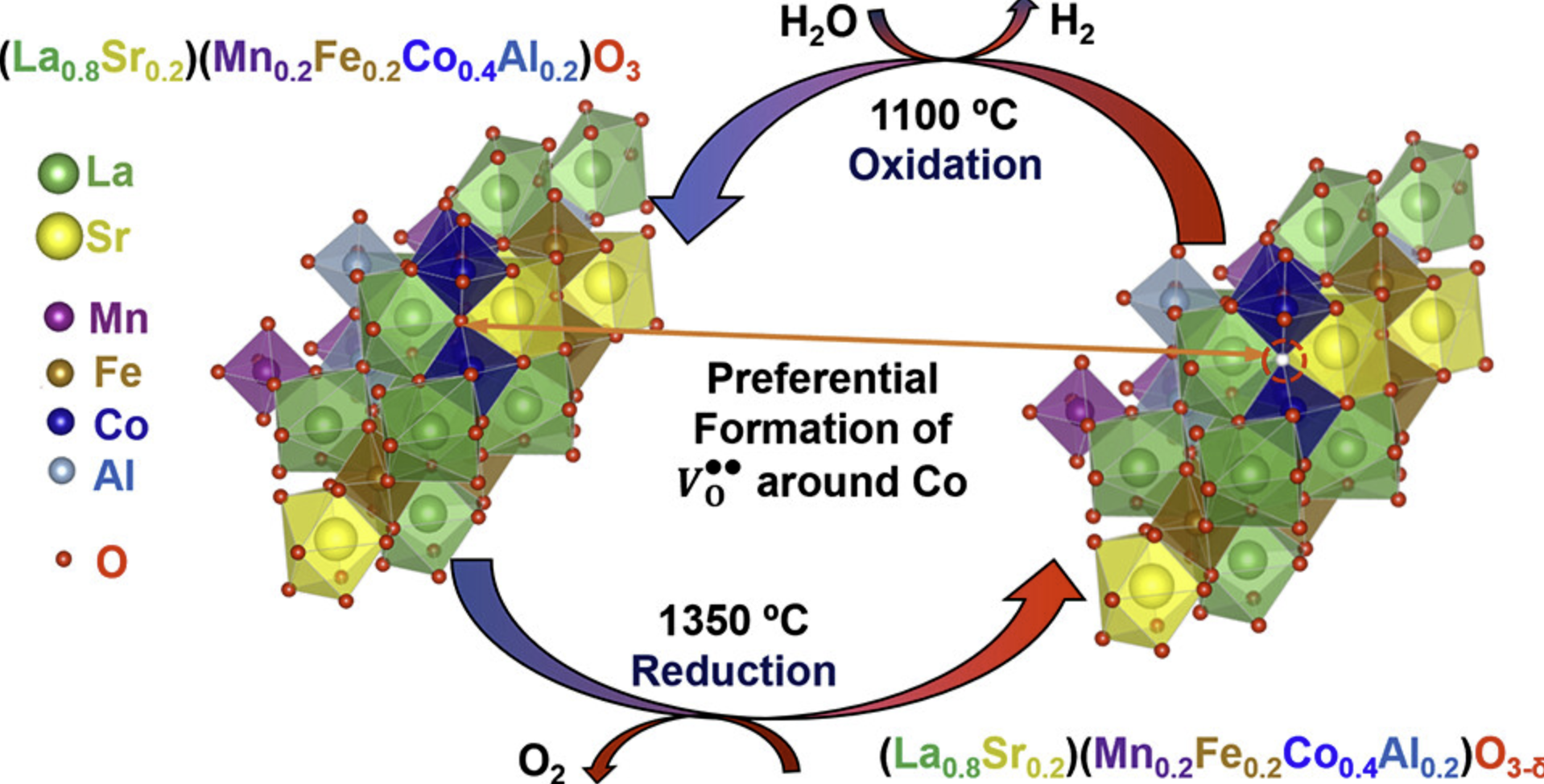
Abstract:
Solar thermochemical hydrogen (STCH) generation is a promising approach for eco-friendly H2 production, but conventional STCH redox compounds cannot easily achieve desirable thermodynamic and kinetic properties and phase stability simultaneously due to a rather limited compositional space. Expanding from the nascent high-entropy ceramics field, this study explores a new class of compositionally complex perovskite oxides (La0.8Sr0.2)(Mn(1–x)/3Fe(1–x)/3CoxAl(1–x)/3)O3 with new non-equimolar designs for STCH. In situ X-ray photoelectron spectroscopy shows preferential redox of Co. The extent of reduction increases, but the intrinsic kinetics decreases, with increasing Co content. Consequently, (La0.8Sr0.2)(Mn0.2Fe0.2Co0.4Al0.2)O3 achieves an optimal thermodynamic and kinetic balance. The combination of a moderate enthalpy of reduction, a high entropy of reduction, and preferable surface oxygen exchange kinetics enables a maximum H2 production of 89.97 mmol moloxide–1 in a short 1 h redox duration. Entropy stabilization may contribute to the phase stability during redox cycling without phase transformation, which enables STCH production for >50 cycles under harsh interrupted conditions. The underlying redox mechanism is further elucidated by a density functional theory-based parallel Monte Carlo computation approach. This study suggests a new class of non-equimolar compositionally complex ceramics for STCH and thermochemical looping.
Dawei Zhang, Héctor A. De Santiago, Boyuan Xu, Cijie Liu, Jamie A. Trindell, Wei Li, Jiyun Park, Mark A. Rodriguez, Eric N. Coker, Joshua D. Sugar, Anthony H. McDaniel, Stephan Lany, Liang Ma, Yi Wang, Gregory Collins, Hanchen Tian, Wenyuan Li, Yue Qi, Xingbo Liu, and Jian Luo
DOI: 10.1021/acs.chemmater.2c03054
Read full paper at ACS














































